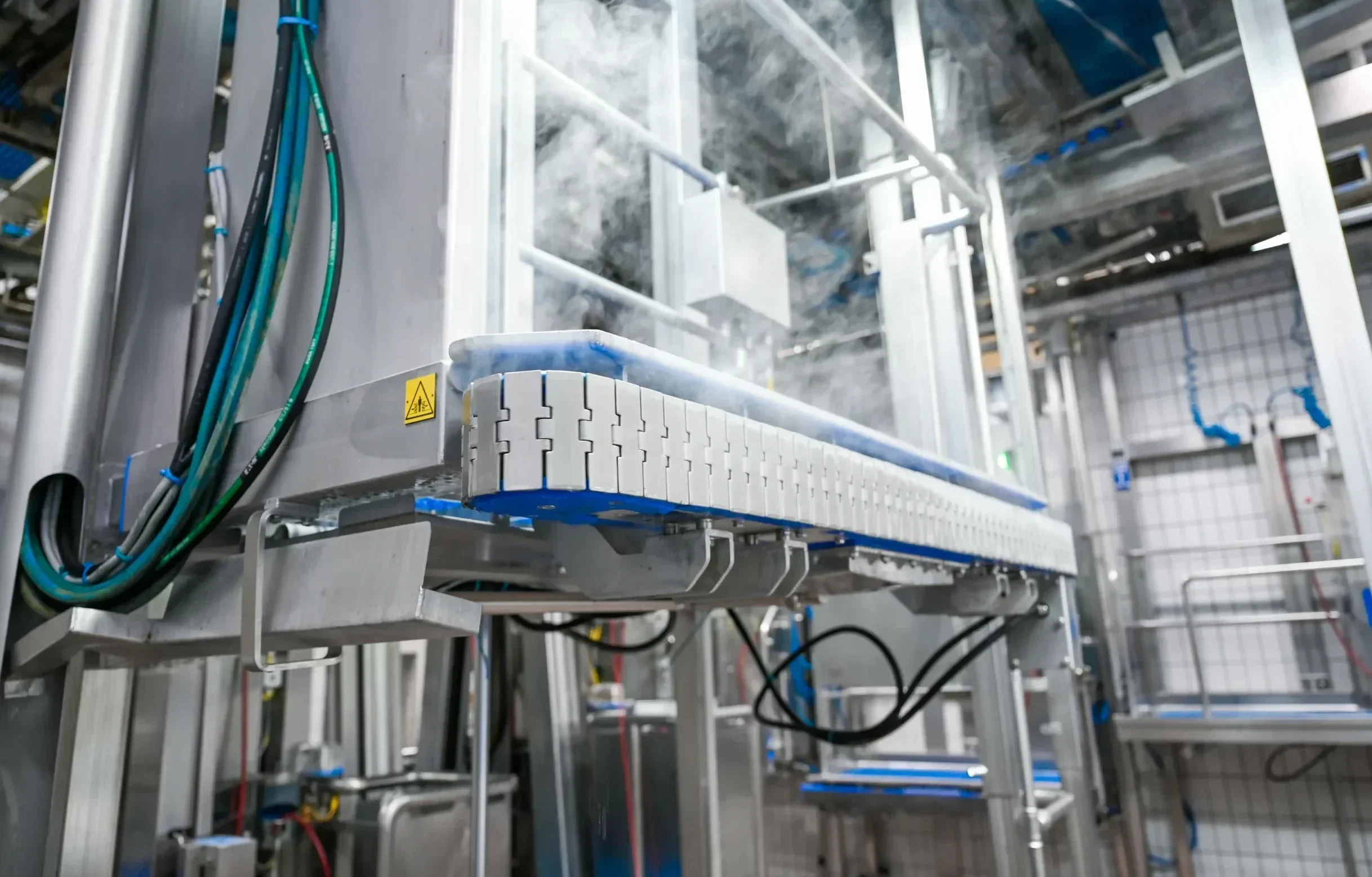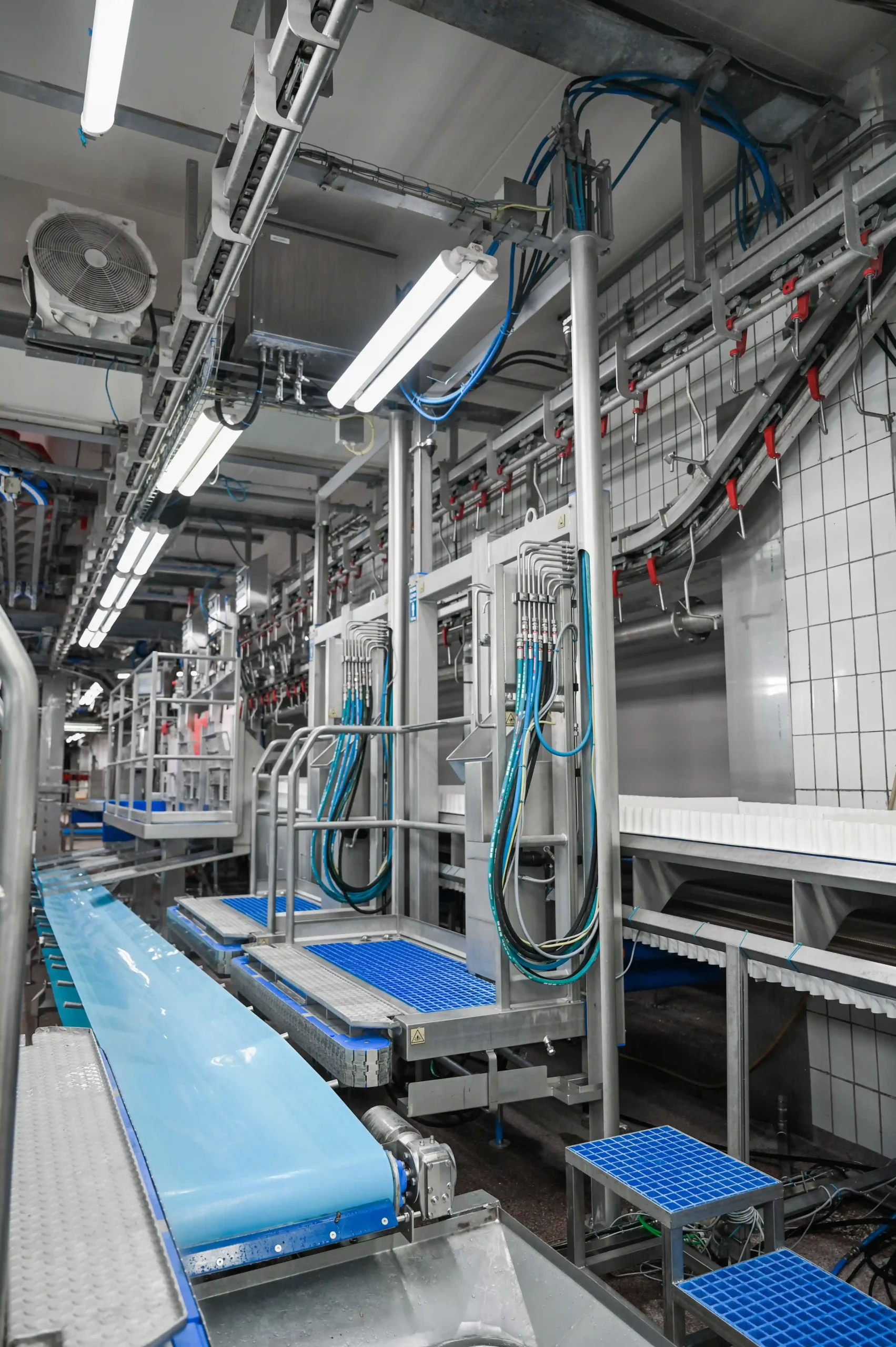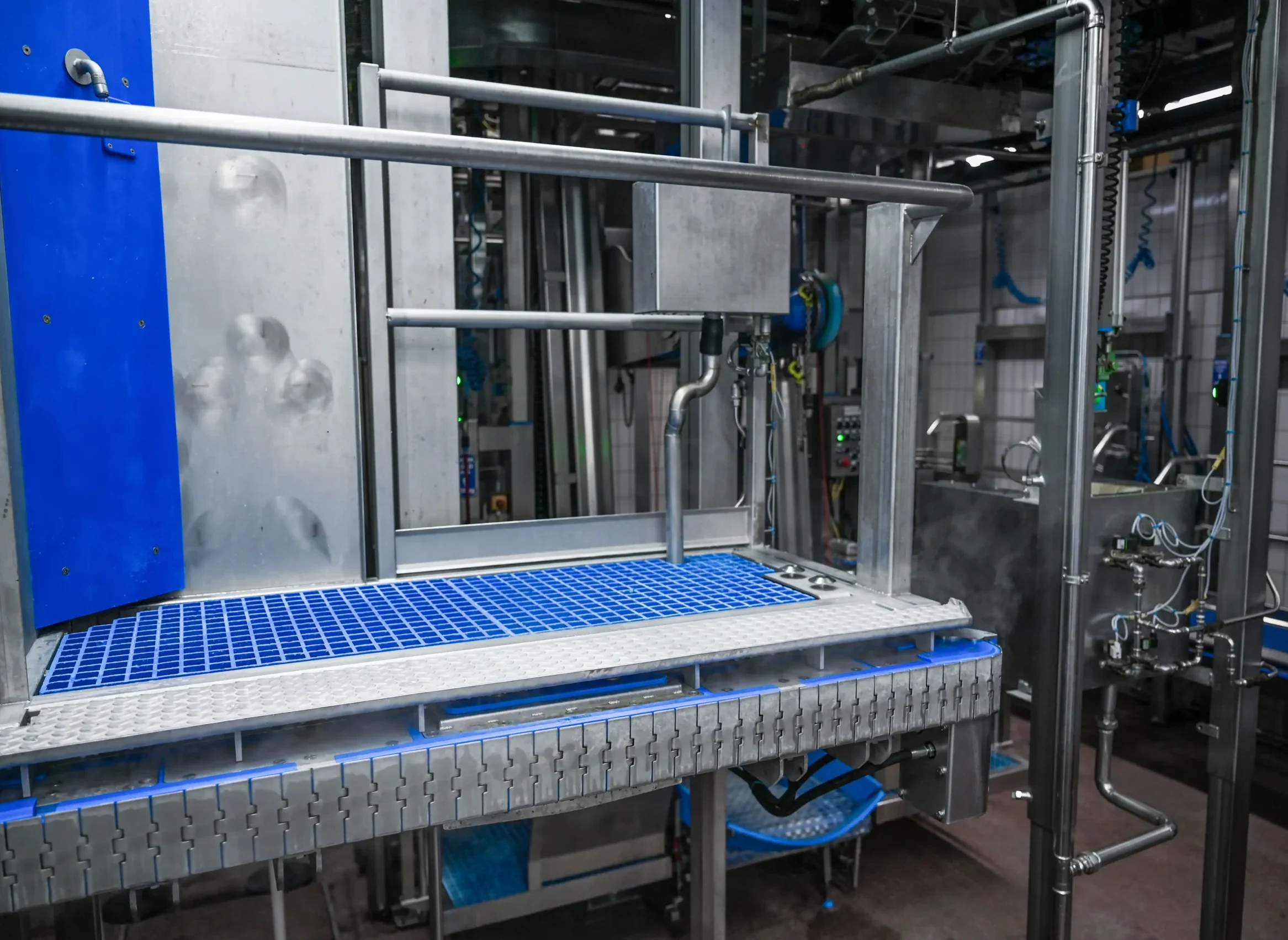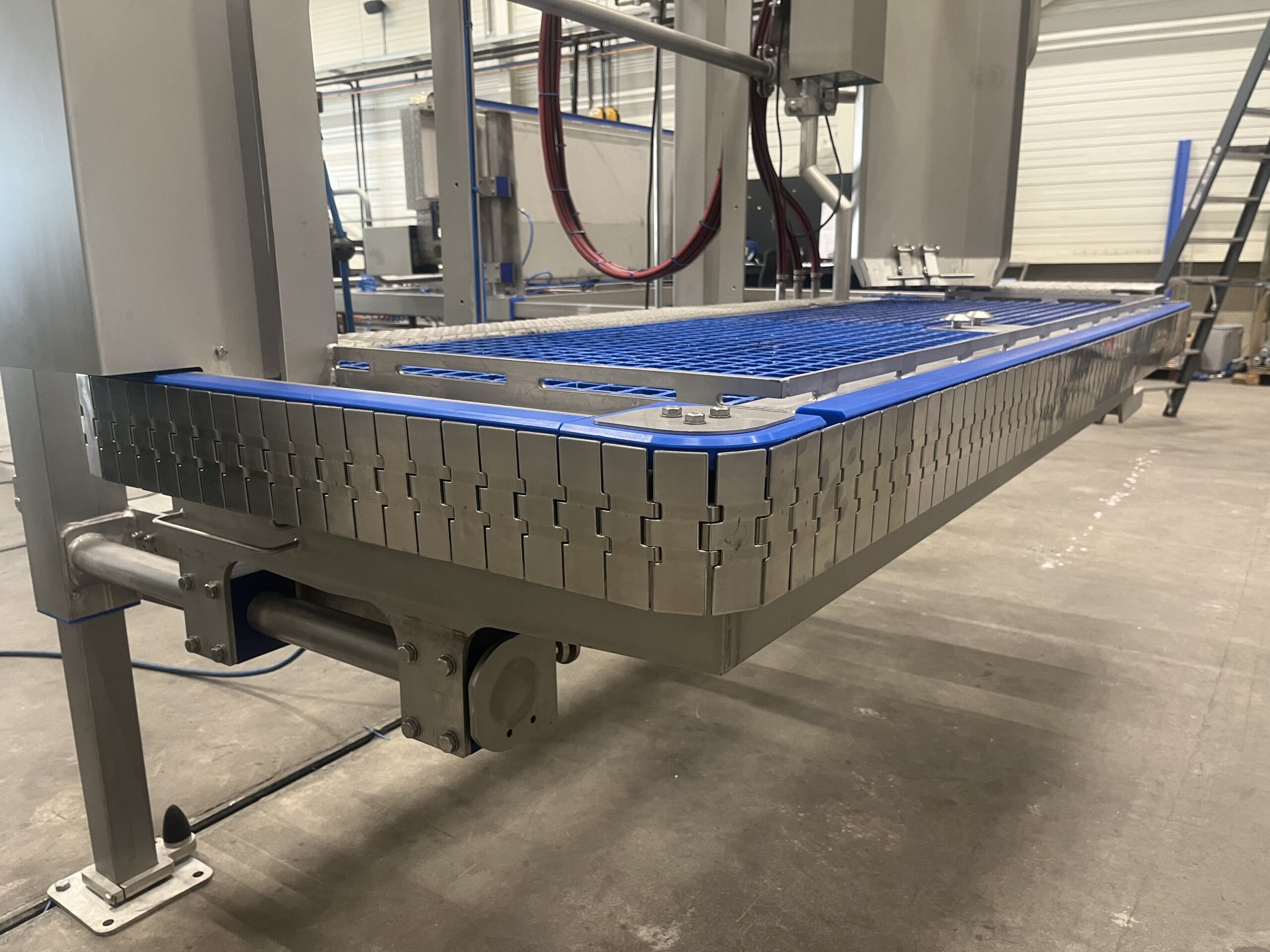Optimise hygiene: DGS anticontamination belt in slaughterhouses
Anti-contamination belts are an important part in optimising hygiene and clean slaughter in slaughterhouses. These conveyor belts are mounted at the front of the workplace and made of stainless steel. They are used to keep the front of slaughterhouse landings clean so that the risk of contamination is significantly reduced.
The anti-contamination belt acts as a protective buffer, where it can have direct contact with the carcasses. This prevents rejected carcasses, which may be contaminated, from inadvertently coming into contact with the platforms and thus contaminating subsequent carcasses. The belts have an automated cleaning process in which the belt rotates and is rinsed with hot water. This ensures maximum hygiene and minimises the risk of spreading bacteria and other contamination.
Hygienic and efficient process
The cleaning and sterilisation process is as follows: a first spray section rinses the dirt from the belt with warm water, followed by the second spray section that sterilises the belt with hot water. The third spray section cools the belt with cold water. This not only helps lower the belt temperature; the use of warm and cold water ensures effective cleaning while preventing the tyre from becoming a potential source of contamination for the next batch of carcasses. It also prevents a carcass from sticking to the belt due to overheating, which would affect meat quality. DGS’ anti-contamination belts are versatile on various platforms within the slaughterhouse. The design focuses on ease of use and requires little maintenance, making it a cost-effective and sustainable solution for slaughterhouses.
- Automatic cleaning system
- Maximum hygiene and contamination prevention
- Versatile in use
- User-friendly and low-maintenance
- Optimal system to slaughter as clean as possible
Would you like to know more about our anticontamination belts? Feel free to contact us!
Want to know more?






